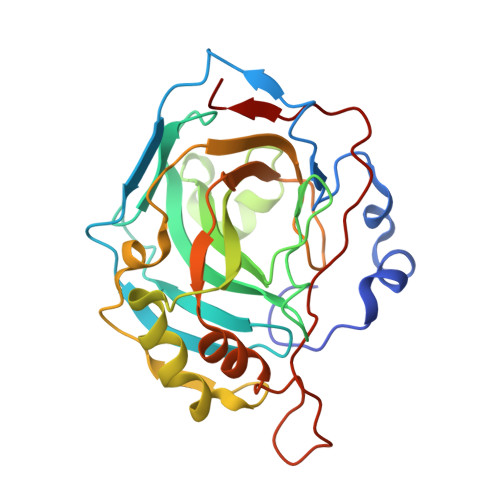Kinetic and crystallographic studies of the role of tyrosine 7 in the active site of human carbonic anhydrase II.
Mikulski, R., Avvaru, B.S., Tu, C., Case, N., McKenna, R., Silverman, D.N.(2011) Arch Biochem Biophys 506: 181-187
- PubMed: 21145876
- DOI: https://doi.org/10.1016/j.abb.2010.12.004
- Primary Citation of Related Structures:
3RLD - PubMed Abstract:
The rate limiting step in catalysis of bicarbonate dehydration by human carbonic anhydrase II (HCA II) is an intramolecular proton transfer from His64 to the zinc-bound hydroxide. We have examined the role of Tyr7 using site-specific mutagenesis and measuring catalysis by the ¹⁸O exchange method using membrane inlet mass spectrometry. The side chain of Tyr7 in HCA II extends into the active-site cavity about 7 Å from the catalytic zinc atom. Replacement of Tyr7 with eight other amino acids had no effect on the interconversion of bicarbonate and CO₂, but in some cases caused enhancements in the rate constant of proton transfer by nearly 10-fold. The variant Y7I HCA II enhanced intramolecular proton transfer approximately twofold; its structure was determined by X-ray crystallography at 1.5 Å resolution. No changes were observed in the ordered solvent structure in the active-site cavity or in the conformation of the side chain of the proton shuttle His64. However, the first 11 residues of the amino-terminal chain in Y7I HCA II assumed an alternate conformation compared with the wild type. Differential scanning calorimetry showed variants at position 7 had a melting temperature approximately 8 °C lower than that of the wild type.
Organizational Affiliation:
Department of Pharmacology, University of Florida, Gainesville, FL 32610, USA.




















